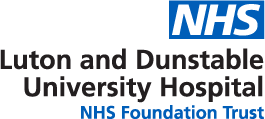By continuing to use the site, you agree to the use of cookies. You can find out more by following this link - Close
This involves the treatment of breast cancer by removal of only part of the breast. The remaining tissue will be reshaped to fill the area that has been removed and occasionally the use of a local flap will be required. Breast conserving surgery is often combined with lymph node surgery.
Complications after breast conserving surgery are unusual, but you may notice the breast is a little swollen and bruised. This normally settles quite soon, but if you have any concerns then contact the Hospital at Home team or your Breast Care Nurse. Occasionally we need to do a further operation if there is a big collection of blood forming (haematoma). There is also a small risk of wound infection and you should report any increasing redness or pain, particularly if with fever in the days after surgery.
Your surgeon will discuss the type of scar to expect but often it will go around your nipple or and because of this you may notice a change in nipple sensation (either more or less sensitive). Other common places for the scar are to the side of the breast or in the fold under the breast. Scars always remain numb, and there may also be slight numbness of the skin near the scar. Sometimes, if the cancer is close to or affecting the nipple, we may need to remove the nipple as part of the surgery. In some women who have large breasts or who have a large tumour compared to the breast size, this type of surgery may be offered as a breast reduction or breast lift procedure (therapeutic mammoplasty). Recovery after breast conserving surgery is usually quite fast and most people are able to go home the same day, unless they have a local flap or therapeutic mammoplasty as these are more complex surgeries. Your wounds will have either skin glue over them or a waterproof dressing. With a waterproof dressing you can have a gentle shower or sit in a shallow bath but please don’t soak the wound.
You will get an appointment to come to discuss the results of your surgery on the Friday afternoon of the following week. At that time we will remove your dressings and reapply them if needed; the Hospital at Home team will also change them for you before then when they visit if they feel it is necessary. By the time you come for that appointment your tissue will have been examined under the microscope to ensure that we have got all of the cancer out of your breast. We aim to have a rim of healthy tissue (margin) around the cancer, but sometimes if the cancer can’t be felt, or if there are pre-cancerous changes around it we may not achieve this and will talk to you about having further surgery. About 20-30% of our patients need to return for further surgery because of not having clear margins.
In the long term following this type of surgery you may notice the treated breast is a bit smaller than the other breast and the nipple is a bit higher.
Almost always after breast conserving surgery we will recommend a course of radiotherapy to the rest of the breast. This is to protect the rest of the breast from breast cancer recurring in the future. Because of the radiotherapy you may find that the treated breast doesn’t droop over time in the way your other breast does, and it may become smaller over time. Occasionally it can become larger after radiotherapy (particularly if you develop breast lymphoedema) .If you find that the differences between your breasts following treatment are problematic your Breast Care Nurse can advise you on what options are available.
Many trials have shown that treating breast cancer by breast conserving surgery with radiotherapy is safe and gives outcomes that are as good as with mastectomy. If you are offered breast conserving surgery but are not whether a mastectomy would be a better choice for you then it may help to talk this over with your family and friends, Brest care nurse and surgeon.
Wire-guided breast conserving surgery
Sometimes a cancer cannot be felt clearly by the Surgeon. This is often the case if a cancer is picked up through a screening mammogram rather than because a lump has been noticed. In this case we will need the help of the radiologists to show us where in the breast the cancer is. They can do this either by doing an ultrasound and marking the skin with pen over the site of the tumour or, more commonly, by inserting a fine wire into the tumour using ultrasound or mammographic guidance. Whether you have a skin mark or insertion of a wire this will take place in the Breast Screening Unit on Lewsey Road where you will have previously been seen in clinic. It will be done on the morning of your surgery and your Breast Care Nurse will have explained to you what time to go for this. If a wire is inserted this will be done using local anaesthetic and is very similar to when you previously had a biopsy of your breast. Afterwards the wire will be covered with a large dressing to stop it being dislodged and you will come down to the main hospital for your surgery.
Click here to download the patient information leaflet about breast conserving surgery.

